Pop Culture
‘It’s a Carnival Life’: Four Artists and One Art Dealer at New York Comic Con on Surviving Lockdown—and Returning to the Convention Circuit
It's been a long 18 months for creatives who rely on conventions for income.
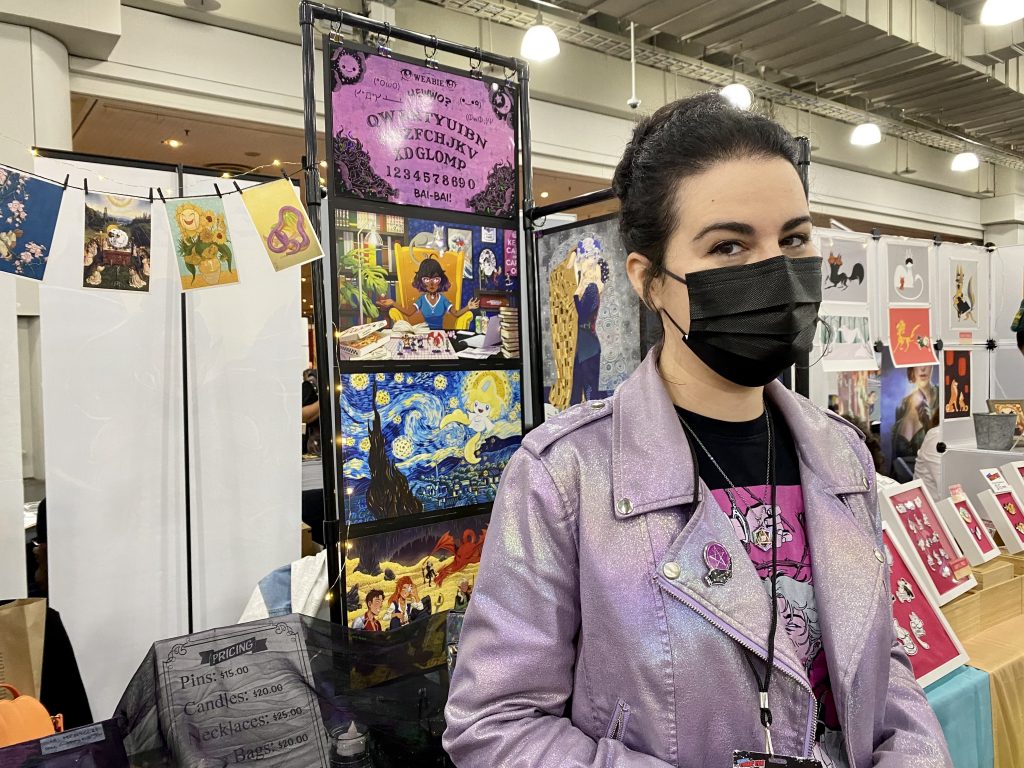
It's been a long 18 months for creatives who rely on conventions for income.

Sarah Cascone

It was, by fandom standards, a subdued opening day for New York Comic Con on Thursday. Yes, there were guests sporting elaborate cosplay getups from their favorite superheroes and anime characters, and yes, there were celebrity guests in attendance such as Star Trek’s William Shatner and George Takei.
But the aisles were bizarrely spacious compared to a normal year, with just 477 booths, down from 642 in 2019, the last time the popular event took place. Nevertheless, for fans and exhibitors alike, moving forward with the con was a priority, both as a joyous celebration of comics and all things pop culture, and as a way to bounce back from the financial hardships caused by lockdown.
“The pandemic was absolutely devastating and humbling,” Seattle artist John Seuferling told Artnet News.
Normally, he does about 30 cons each year, crisscrossing the country selling votive candles featuring prints of his “Pop Art Saints” series. The drawings, which he does by hand and colors on the computer, canonize roughly 100 popular characters and celebrities, from Daenerys Targaryen and Princess Leia to Betty White and Bernie Sanders. (His subjects have occasionally gotten “cancelled;” St. Guy Fieri had to replace Mario Batali.)
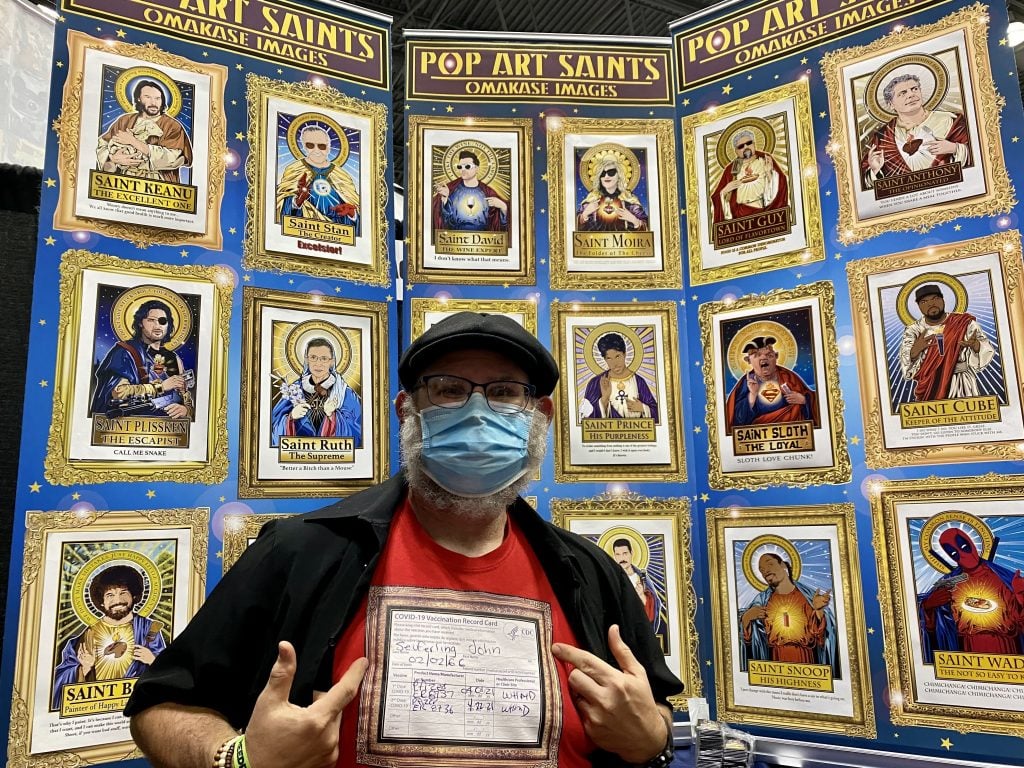
Artist John Seuferling at New York Comic Con 2021. Photo by Sarah Cascone.
Seuferling offers the art on his website, Omakase Images, but the vast majority of his sales happen in person.
“The magic of a comic con is that it funnels your audience right to you,” he said. “Not being able to do public events absolutely destroyed me. Being a gig worker who sells drawings of St. Keanu Reeves—you can’t even begin to describe that. It’s a carnival life.”
Chris Schweizer writes and illustrates graphic novels, but he was surprised to discover just how important cons were for his livelihood. That’s where he sells prints of his retro-style movie poster art, immortalizing titles such as Beauty and the Beast and Indiana Jones and the Last Crusade for $5 to $15.
“I did not realize until my wife told me that conventions made up 50 percent of our income,” he said.
The family got by in part thanks to a mortgage deferment on their home in western Kentucky, where a company that specializes in coal mining manuals handles all of his printing.
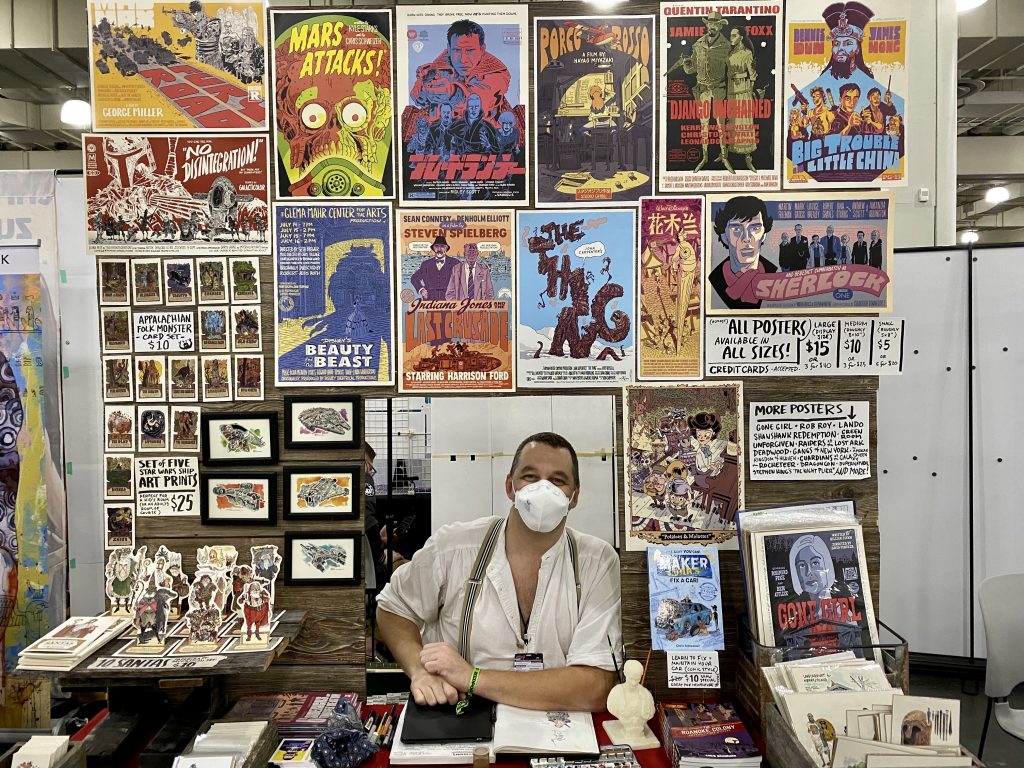
Artist Chris Schweizer at New York Comic Con 2021. Photo by Sarah Cascone.
Leanne Huynh, a former video game artist for Blizzard who specializes in dreamy digital paintings of female characters, normally gets about 70 percent of her income from selling $20 prints at conventions.
“It was a little rough,” she told Artnet News of 2020. “I was able to get unemployment, and that helped a lot.”
Living in Los Angeles, Huynh had never shown at the New York con before, and though it was less crowded than San Diego, opening day was “better than I expected, to be honest,” she said. “It’s nice to reconnect with the community of artists and the fans and talk about comics.”
Others had an easier time pivoting during lockdown.
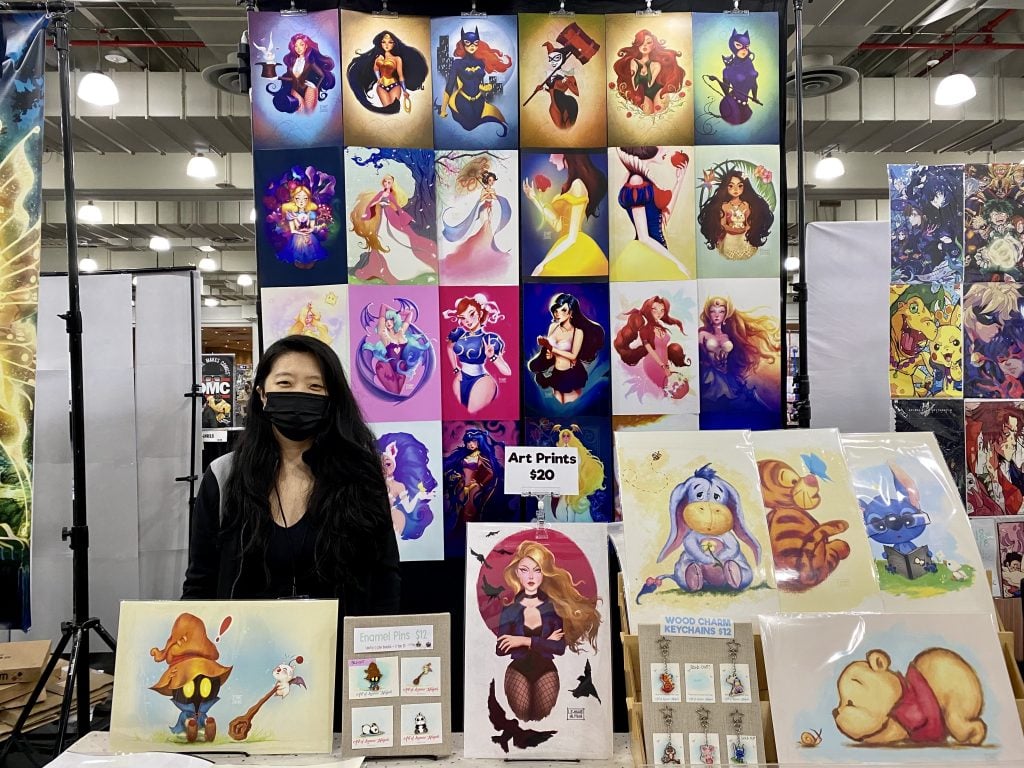
Artist Leanne Huynh at New York Comic Con 2021. Photo by Sarah Cascone.
After 15 years making her living as a full time artist and selling work at cons, Missy Peña of Seattle was completely unprepared for what 2020 brought her way.
“I had the opportunity to participate in the very first coronavirus trial,” she told Artnet News. “I was the 14th person in the world to get the vaccine.”
An art school grad who studied art history, Peña mashes up anime characters with classic masterpieces such as Vincent van Gogh’s Starry Night or Art Nouveau-style posters, embellishing her $25 prints with glittery foil accents.
This will be first and last con for a while: During the pandemic, she took a job as an illustrator for the Yahtzee mobile app. “Hopefully conventions will still be here when I want to come back,” she said, “because I do think I want to come back to doing this full time.”
Denver’s Frank J. Svoboda, who produces original art from animated films and movies though his business Animation Art Emporium, normally sells about $80,000 worth of work at cons each year. When that shut down, he approached Heritage Auctions and began selling his holdings there, as well as offering some less valuable pieces on eBay.
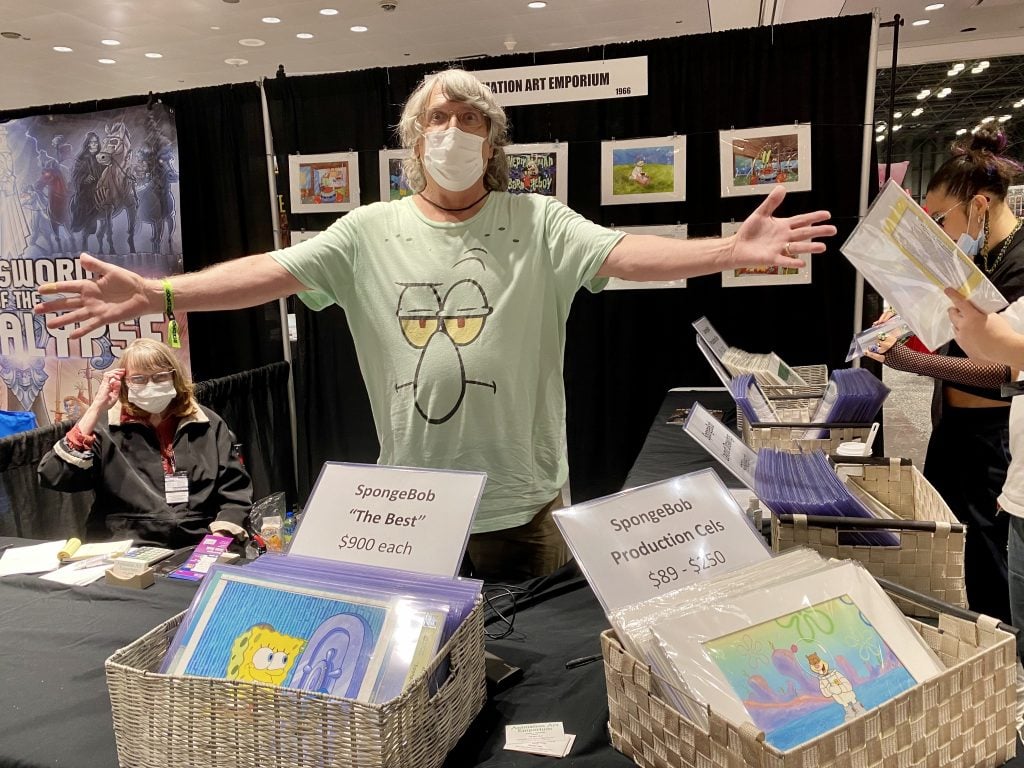
Dealer Frank J. Svoboda, of Animation Art Emporium, at New York Comic Con 2021. Photo by Sarah Cascone.
“I was lucky because I had some other way to make money,” Svoboda said.
At the con, he was offering a selection of original drawings, animation cells, and backgrounds from the popular Nickelodeon cartoon Spongebob. The show, which began airing in 1999, only did one season of traditional animation before moving to digital production, meaning that there is a scarcity of physical art from the long-running program compared to other beloved cartoons.
Svoboda purchased the Spongebob artwork from a bankruptcy auction house after the company Nickelodeon had paid to frame it for sale went under. He’s sold the bulk of his holdings over the last ten years—including a number to the show’s voice actors—but has saved the strongest pieces for last, with the expectation that demand and prices will rise as the show’s fans accrue more money to spend on art.
“I figure they need to be about 40 to be able to buy their childhood memories,” he said.
A hand-painted background and animation cell from Spongebob can fetch up to $3,100 at Heritage, but they are on offer from $900 at the con, where Svoboda expects to sell in bulk compared to the 20 or so works the auction house will agree to list each year. The drawings are $200 each, with animation cells with a reproduced background starting at $89.
Sales the first day, he said, were “excellent.”